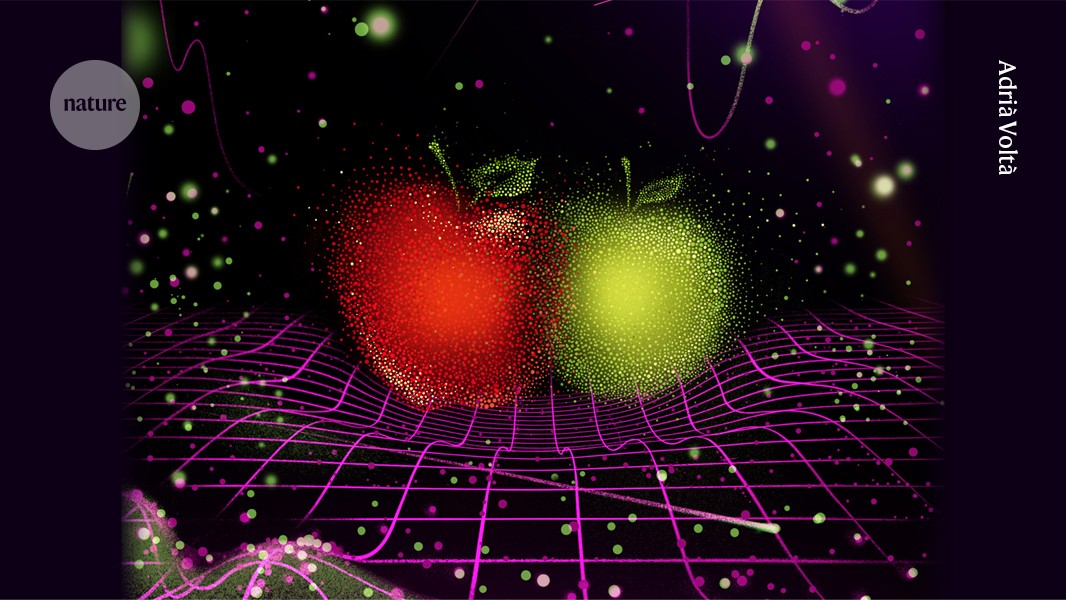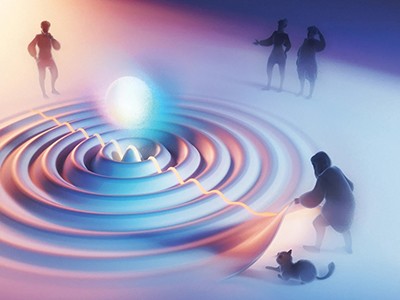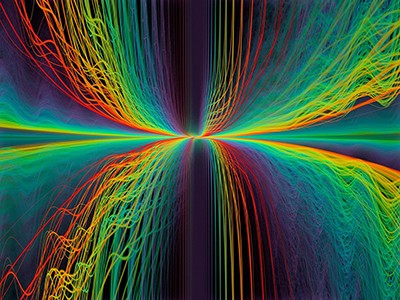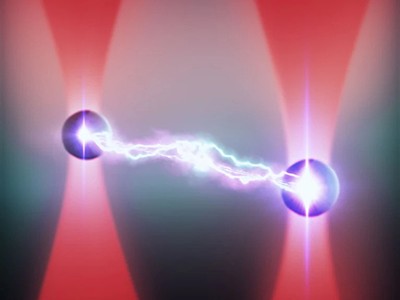Quantum physics is often described as the most successful scientific framework in history. In its 100 years of existence, it has explained everything from the periodic table of the elements to how stars shine. But there is one fundamental phenomenon it can’t explain: gravity.
“How quantum mechanics and gravity fit together is one of the most important outstanding problems in physics,” says Kathryn Zurek, a theoretical physicist at the California Institute of Technology (Caltech) in Pasadena.
Generations of researchers have tried to create a quantum theory of gravity, and their work has produced sophisticated mathematical constructs, such as string theory. But experimental physicists haven’t found concrete evidence for any of these, and they’re not even sure what such evidence could look like.
Now there is a sense that insights could be around the corner. In the past decade, many researchers have become more optimistic that there are ways to test the true nature of gravity in the laboratory. Scientists have proposed experiments to do this, and are pushing the precision of techniques to make them possible. “There’s been a huge rise in both experimental capability and our theoretical understanding of what we actually learn from such experiments,” says Markus Aspelmeyer, an experimental physicist at the University of Vienna and a pioneer of this work.
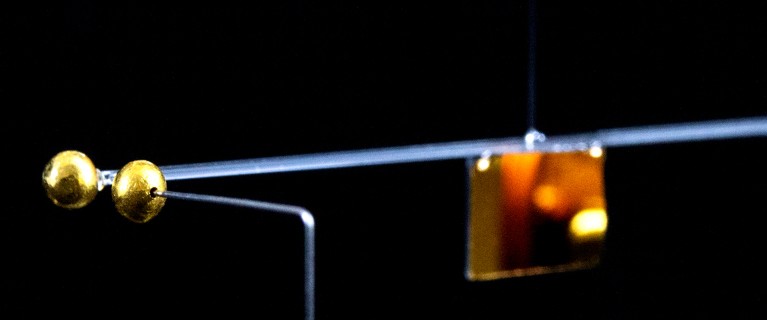
This tabletop balance can measure the gravitational force between very small masses.Credit: Westphal, T., et al., Nature
Some of the proposed tests involve experimental lasers, which could be built in a few years. Others require manipulating matter in such ambitious ways that they might never be achieved. One shocking result could be that gravity is not a quantum phenomenon after all.
Still, many researchers feel that the field is finally on the right track. “You have to search, if you’re going to find anything,” says Lee McCuller, an experimental physicist also at Caltech.
Theories of gravity
The current accepted theory of gravity is Albert Einstein’s general theory of relativity. It has revealed that gravity is the way in which each lump of matter influences another by curving the space-time in which they travel — akin to billiard balls deforming the elastic surface of a trampoline and bending each others’ paths as they move on it.
General relativity is a classical — as opposed to a quantum — theory. In quantum physics, a particle is described as a smeared-out cloud of possibilities, and its position only assumes a meaning after it’s measured. But Einstein’s theory sees particles as things that exist at a precise point in space at any given time, and that move along well-defined trajectories.
Physicists disagree wildly on what quantum mechanics says about reality, Nature survey shows
Researchers attach a variety of meanings to the idea of gravity being quantum, says Flaminia Giacomini, a physicist at the Swiss Federal Institute of Technology (ETH) in Zurich. Scientists generally agree that any quantum theory of gravity has to involve features such as objects having fuzzy probability distributions, rather than definite locations. Some theories also require space-time to come in discrete chunks (‘quanta’), as opposed to the smooth space-time of Einstein’s theory, but this is by no means synonymous with gravity being quantum, she says.
In early attempts to create a quantum theory of gravity in the 1960s, theoretical physicists tried to feed general relativity into a mathematical procedure that turns classical equations into quantum ones (and objects with well-defined properties into fuzzy probabilistic clouds). But although this trick had worked well for another fundamental force of nature, electromagnetism, in the case of Einstein’s theory, it gave nonsensical results, such as quantities that blew up to infinity.
Efforts to build quantum theories of gravity from scratch have produced some mathematically consistent results. The most popular attempt is string theory, which posits that elementary particles are really tiny strings vibrating in unseen dimensions of space. In principle, this could solve some paradoxes in the theory of known elementary particles, and it predicts new elementary particles that behave the way physicists expect of quanta of gravity, or ‘gravitons’.
This does achieve the goal of making gravity a quantum theory. But researchers have looked for experimental signatures of certain versions of string theory, with no success so far. The same has been true of loop quantum gravity, an even more radical approach that replaces the fabric of space-time (not just the elementary particles that live in it) with tiny loops.
Some physicists have become frustrated at the dearth of prospects for testing what they see as fancy constructs, such as string theory. “I think people are getting disenamoured with it,” says Ivette Fuentes, a theoretical physicist at the University of Southampton, UK.
Turning to experiments
Instead of designing new quantum gravity theories, some researchers are hoping to use lab tests to explore basic questions about whether gravity, at its heart, has a classical or a quantum nature.
“We don’t have any experimental evidence of how gravity becomes quantum — or of whether gravity is a quantum phenomenon at all,” says experimental physicist Richard Howl at Royal Holloway, University of London.
“For me, the coolest thing would be a yes-or-no experiment,” says Aspelmeyer.
One of the big questions that researchers have concerns the quantum phenomenon of ‘superposition’ — in which an object can be in two states simultaneously, such as rotating in opposite directions or moving along two distinct paths at once. In any quantum version of general relativity, a particle’s billiard-ball influence would presumably put space-time itself into a superposition of space being bent along one path and, simultaneously, along another. Theorists wonder what gravitational attraction a second ball should feel: would it fall simultaneously along two trajectories, splitting its path into two? Or, if this quantum superposition does not occur, perhaps it would fall towards some point in between, averaging the two attractions out?
Then again, would the very presence of the second ball force the first ball to ‘choose’ which path it is on, just as a measuring device forces a particle to know its position?
In the past decade, theorists have realized that it should be possible to experimentally distinguish between these ideas, through the peculiarly quantum phenomenon of entanglement. In quantum mechanics, when two objects interact, they can enter a common, ‘entangled’ state. This means that when a property of the first object is measured and acquires a definite value, the corresponding property of the other object is also set.
Two places at once: superposed crystal could test whether gravity obeys quantum laws
The key idea is that if two objects can become entangled through their mutual gravitational attraction in the absence of any other interaction, then gravity must be of a quantum nature.
It all sounds abstract, but researchers have been concocting a plethora of schemes to put this into practice.
In one experiment envisaged by Aspelmeyer, a tiny particle in a vacuum is placed into a superposition of states corresponding to different positions. Researchers then look to see whether a second, nearby particle, which feels the gravitational attraction of the first but no other forces, has become entangled with it.
Aspelmeyer has been at the forefront of improving techniques to make this possible — although the full experiment can’t be done yet.
One major challenge is that putting an object in a superposition of locations gets increasingly difficult the larger the object is — after all, such effects are never seen at the macroscopic scales of everyday life.
So far, researchers have achieved it with molecules made of thousands of atoms1, and have made significant breakthroughs in getting relatively large objects, such as tiny glass spheres levitated by laser beams, to show other aspects of quantum behaviour. An important step has been to slow down particles so much that their motion reveals a quantum nature, Aspelmeyer notes: for instance, they acquire discrete energy levels when trapped in an electromagnetic field. This feat was achieved for the first time in 20202.
The experiment of Aspelmeyer’s dreams would require two objects not only to behave in a quantum way but also to be massive enough to exert a substantial gravitational pull on each other. Because gravity is such a weak force, that would require masses of at least 22 micrograms, having quintillions of atoms.
Aspelmeyer can’t yet measure the tiny gravitational force that would be produced by these objects. In 2021, he reported doing so for much larger particles, with a mass of 90 milligrams3. He attached two such masses at the ends of a tiny stick, which was suspended horizontally with a string attached to its midpoint. He then brought in a third 90-mg mass close to one end, and saw the effect of this gravitational pull by measuring the stick’s rotation.
A challenge with measuring smaller objects and their gravitational fields is that it’s very hard to isolate them from other interactions — which tend to be much stronger than gravity. Such isolation would be necessary in the experiment Aspelmeyer wants to do for researchers to be confident that any effect they see is truly due to gravity alone.
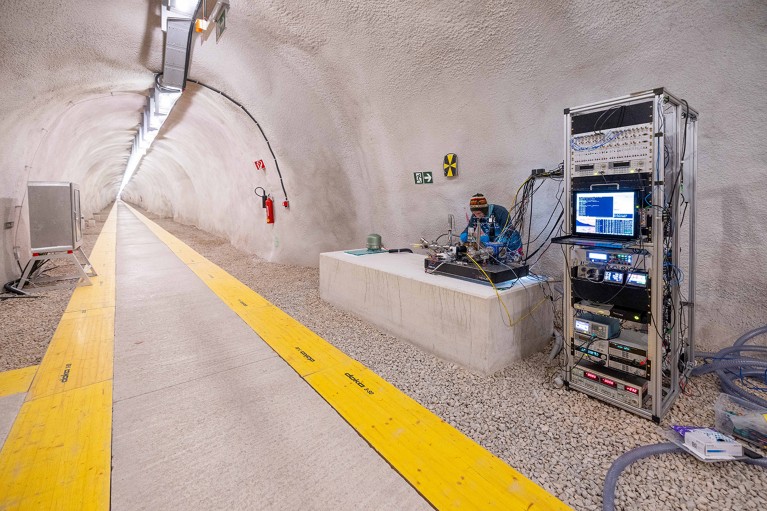
Physicists measure the gravitational forces of tiny masses in an underground laboratory, the Conrad Observatory in Trafelberg, Austria, to block out external noise.Credit: Aspelmeyer Group/University of Vienna/OEAW
Sougato Bose, a theoretical physicist at University College London (UCL), and others have proposed and received some funding for a related experiment4. The idea is to have particles in free fall: the researchers suggest putting a microscopic diamond crystal in a superposition that involves falling along two parallel directions, and doing the same for another, similar crystal. (This is achieved in each crystal by putting into superposition one of its spin states and then applying magnetic fields; the crystals are deflected in ways that depend on where their spins point, because spin — a quantum property of subatomic particles — acts rather like a tiny bar magnet.) Altogether, there would be four paths, all parallel to each other, which would put the two crystals at various distances from each other, and therefore in a superposition of feeling gravitational attractions of different intensities (see ‘Proposed tests for quantum gravity’).
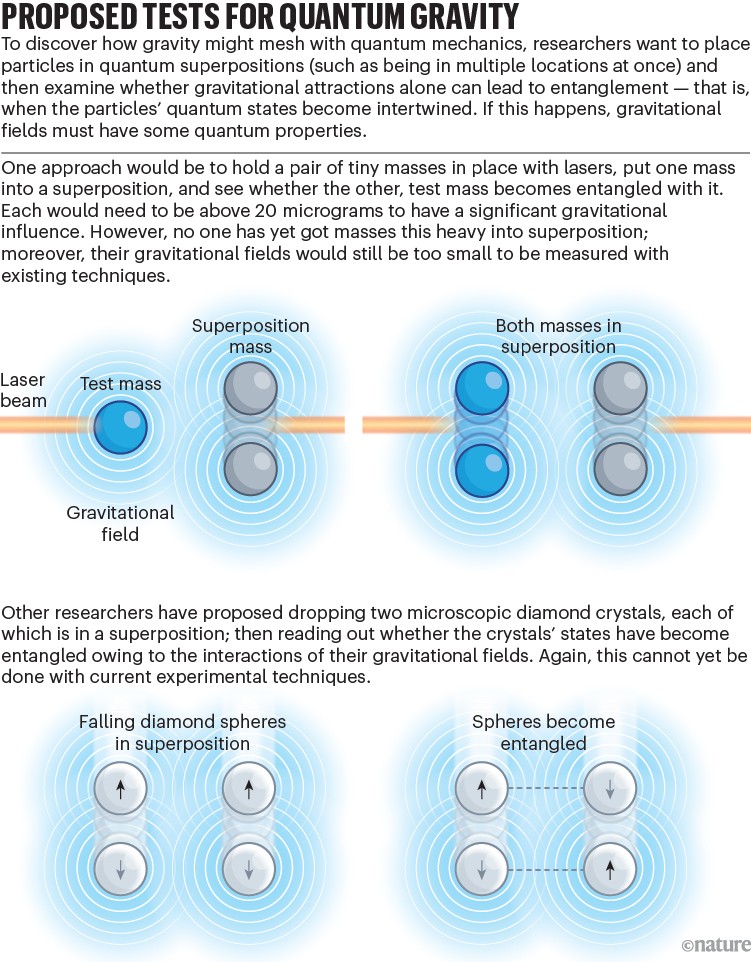
Source: Adapted from Sci. Am. (see go.nature.com/4FW1RJG)
Each crystal would then be recombined into one path, and readouts of their quantum states would reveal whether they had become entangled, an outcome that — so the reasoning goes — could have occurred only through gravity. However, Bose says that each of these steps will be extremely hard to achieve, and it could be many decades before experimental techniques make this feasible to test. (Other teams have made similar proposals.)
Other ways to test gravity
Although Bose and others think that the ability to create entanglement is the key to proving that gravity has a quantum nature, others say the reality could be more subtle.
“You’re not really proving that gravity is quantum; you make some model of what you think gravity not being quantum would mean, and then try to rule that out,” says Daniel Carney, a theoretical physicist at the Lawrence Berkeley National Laboratory in California.
‘Levitating’ nanoparticles could push the limits of quantum entanglement
If gravity can entangle things, he says, then it would certainly not be a classical phenomenon, “but what that means to the full structure of the gravitational field is an open question”.
Other groups have developed concepts for testing the quantumness of gravity without entanglement. One, devised by Howl together with Fuentes and the theorist Roger Penrose at the University of Oxford, UK, would suspend a cloud of cold atoms in a single quantum state called a Bose–Einstein condensate (BEC). Then the gravitational self-attraction of the cloud would make it evolve in different ways, depending on whether gravity is quantum or classical. In particular, classical gravity would never make the positions of the atoms in the BEC evolve from a bell-curve type of distribution (that is, having a single peak) to one with multiple peaks5. It would be possible to measure whether such a shift occurs by probing the BEC with another one, Howl says.
Here, the experimental challenge is that BECs are typically made up of millions of atoms, but that number would need to grow by a factor of 10 million to have measurable gravitational attraction, says Fuentes — although various quantum-technology tricks could soften that requirement.


